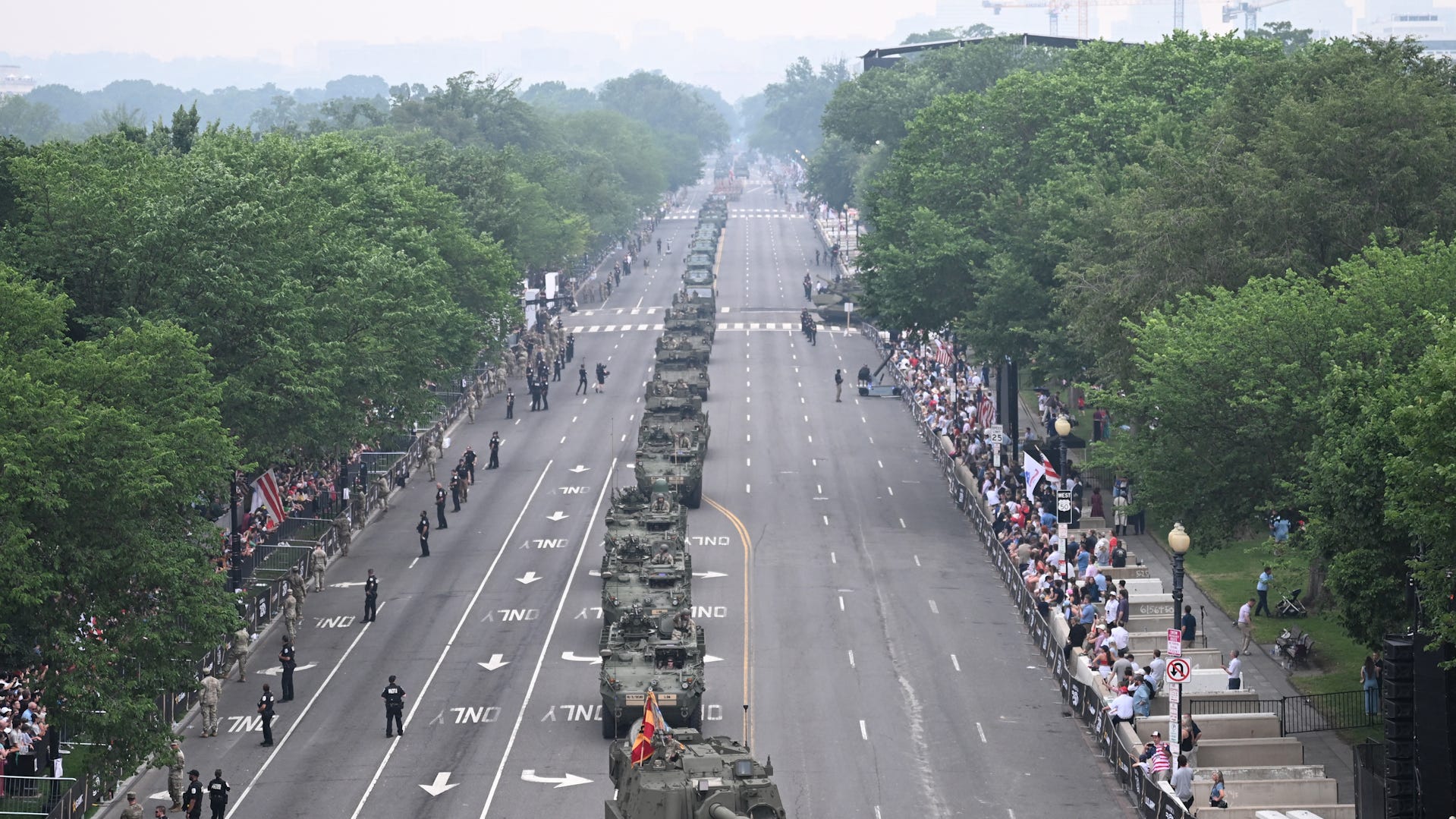Tanks and thousands of soldiers marched in DC Army parade. What was the cost?

WASHINGTON – The Army spent $30 million on the massive 250th anniversary parade that rumbled down the streets of the nation's capital for hours June 14, coinciding with President Donald Trump's birthday, Army officials said.
The cost of the military parade was initially estimated at $25 million to $45 million. The money covered the cost of hauling dozens of tanks and armored vehicles by train and truck from military bases in Texas to the nation's capital. About 7,000 soldiers also converged on Washington for the occasion, with some marching the route in historic costumes. Warplanes flew overhead, and Army parachutists sailed down from the skies before a crowd of thousands.
The Army’s final tabulation does not include the cost of the parade's significant security requirements, including for the Secret Service, Department of Homeland Security, FBI and local police personnel to secure a chunk of downtown Washington and monitor possible threats. The parade was designated a National Security Special Event, a category for large events that could be targets for terrorist attacks and thus require additional work for law enforcement.
Before the parade, authorities laid down 18½ miles of fencing and installed 175 magnetometers to screen everyone who entered the restricted area to watch the parade or join the Army festival that day.
Local officials in Washington raised concerns in the lead-up to the parade about possible damage to city streets. Officials said in their announcement July 22 that it did not turn out to be a major problem.
Steve Warren, an Army spokesperson, said damage to Washington's roads from tanks was "minimal" – one street curb at a park along the Potomac River was crushed. The Army had promised to cover the cost of repairs to the city's roads after Washington Mayor Muriel Bowser said she was concerned the tanks would chew them up.
Critics, including Democratic lawmakers, said the parade politicized the military in a celebration of Trump's birthday that seemed reminiscent of the ostentatious scenes to celebrate dictators abroad. Trump presided over the parade from a presidential booth, but the Army and White House denied allegations that his birthday was the reason for the event or that the timing was intentional.
Trump opponents across the country held thousands of "No Kings Day" protests on the day of the parade. Demonstrators in Washington marched to the White House in a "Refuse Fascism" protest.
Warren said the Army experienced a marketing boost in the two weeks leading up to the parade, including a spike in website and social media views and a 31% increase in incoming calls.
"We wanted Americans to feel connected to the Army," he said.